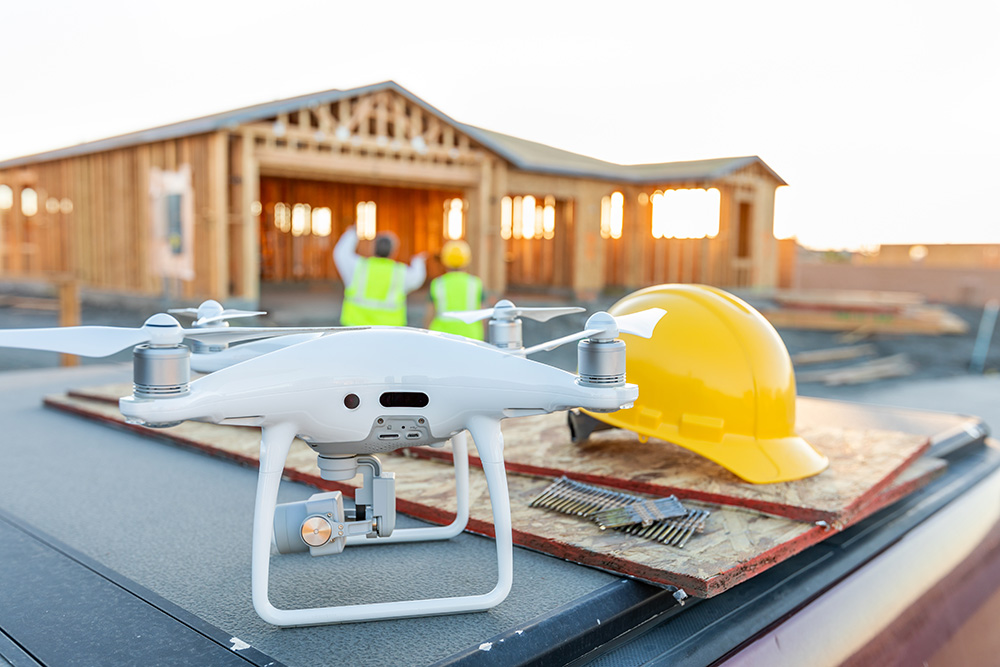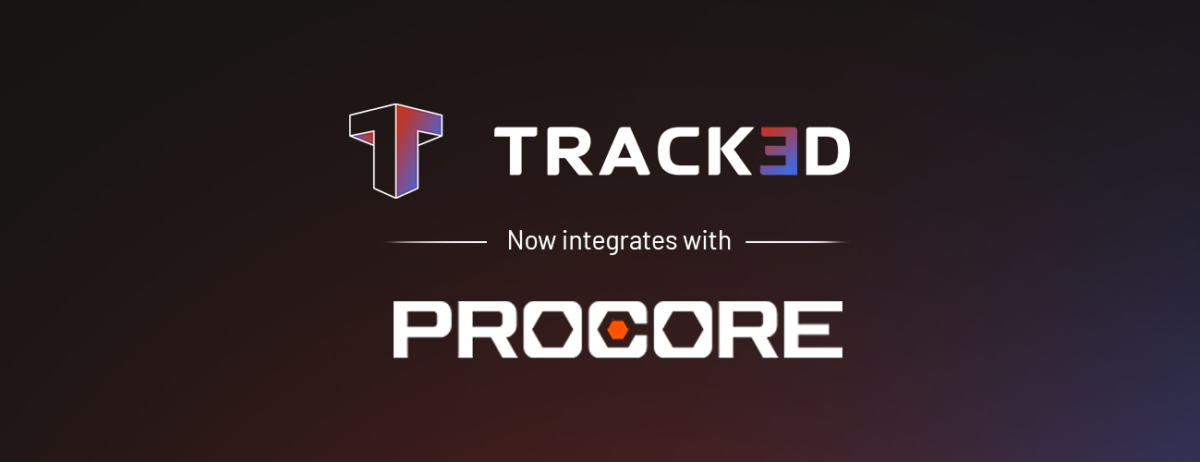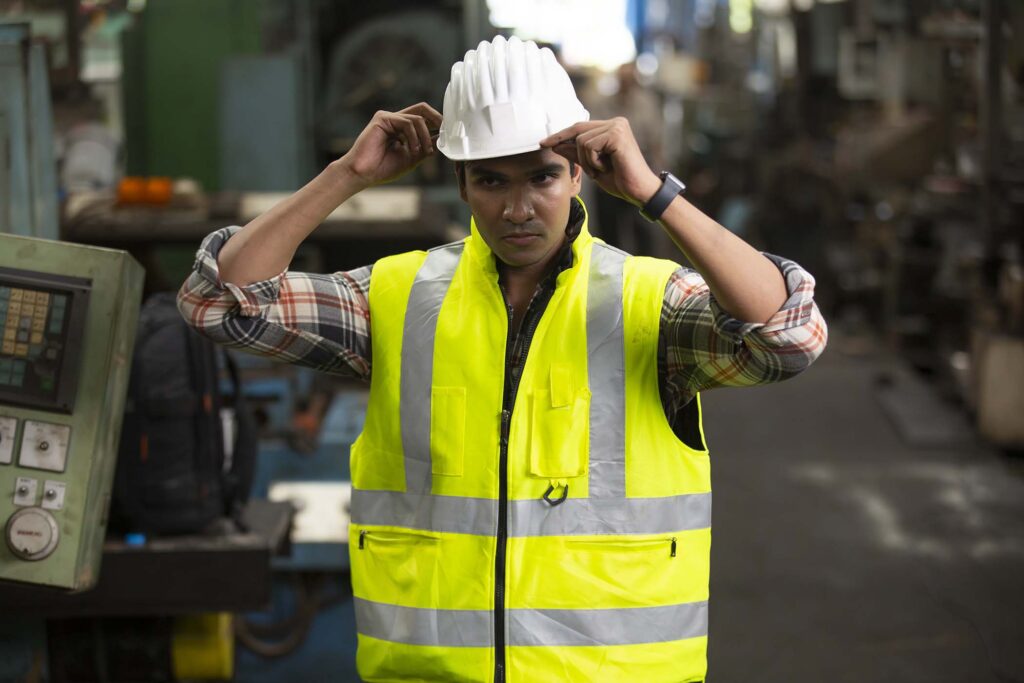Construction Monitoring
The Benefits of Visual Construction Monitoring Technologies

In the modern age, construction monitoring technologies are becoming increasingly popular due to their ability to provide accurate, comprehensive data and project insights.These technologies allow construction company executives to collect data on various aspects of a construction project, including site conditions, material usage, and work progress. The collected data is used to improve the efficiency of a project, reduce costs, and ensure timely project completion within budget.
One particular field that has evolved leaps and bounds in the last decade is the visual data based monitoring solutions. The Constructin.AI solution offers an automated construction monitoring solution that integrates various visual data sources, to provide comprehensive progress analytics above the visual documentation data which would aid project teams in better managing and optimizing construction projects.
Let’s take a closer look at what these technologies have to offer.
The Rise of Visual Monitoring Technologies
Visual construction monitoring technologies are gaining popularity as they provide more accurate information about a construction project than traditional methods. These technologies include drones, 360-cameras, and laser scanners. With these tools, construction companies can monitor progress and quality control on-site. These tools are also used for remote collaboration with other project stakeholders who cannot visit the site in person.
Data Collection & Analysis
One of the key benefits of using visual construction monitoring technologies is its ability to collect accurate data, which is used for analysis. For example, drones with cameras or sensors can capture detailed images or video footage of the project site. Additionally, 3D scans can be used to create accurate measurements and models of the project site, which experts can then analyze to identify areas where improvements are made, or problems are resolved.
Visual Monitoring Technologies being used in Construction Projects
Drone Technology
Drones have become an increasingly popular tool for construction professionals in recent years. These small, unmanned aircraft are equipped with cameras and sensors to gather data and monitor construction sites from above, such as surveying, urban planning, construction management, and disaster risk reduction.
The technology drones use to map construction sites is called Photogrammetry – an advanced technology that combines aerial images and 3D data. Photogrammetry works by analyzing the overlapping images captured by the drone’s camera, and using software algorithms to identify common points in the images. These common points are used to generate a 3D point cloud, which can then be used to create a 3D model of the site. When converted into a single complete image, these high-resolution images are called an orthomosaic. All the objects and features in an orthomosaic are scaled and can be georeferenced, which is used to create detailed three-dimensional maps.
Use cases for Drone Technology in Construction:
- Drones provide an easy solution to monitor construction projects during land preparation stage
- Easy to monitor linear & area based projects like roads, pipelines, Solar projects etc.
- Used to monitor exterior construction of buildings – both at the structural floor construction stage and during the facade construction stage
- Used to monitor hard-to-reach structures for damage or defects – being used for large structures such as bridges, electricity transmission lines etc..
Benefits of Using Drone Technology:
Why do we use drone technology as a solution at construction sites? They
- Provide a quick and easy way to survey large construction sites accurately, capturing high-resolution images and data from the air.
- More accurate then traditional land survey methods
- Helps monitor projects in tough areas like mountainous, hilly terrain
- Can use multitude of sensors to capture data for various use cases
Overall, drones have already proven to be a valuable tool for construction professionals looking to improve the efficiency and accuracy of their projects.
360-degree camera
360-degree cameras are becoming increasingly popular for monitoring construction projects. These cameras provide a panoramic view of the construction site, allowing project managers to monitor progress and identify potential issues from a remote location
360-degree cameras leverage the Simultaneous Localization and Mapping (SLAM) technology to capture construction projects. This technology is used to create a detailed 3D map of the construction site, while also tracking the camera’s position in real-time.
SLAM works by using sensors such as accelerometers, gyroscopes, and cameras to track the camera’s position and movement, while also mapping the surrounding environment. As the camera moves through the construction site, SLAM technology uses sophisticated algorithms to detect the exact position of objects in its field of view and then quickly map the surrounding environment in 3D thereby creating a detailed 3D map of the project site. Additionally, onboard processing technology helps align and stitch these shots into a cohesive frame. Ultimately, this results in a beautiful end product that provides viewers an immersive experience.
Use cases for 360-degree cameras in Construction:
- Made it very easy to visually document building projects progress throughout the construction lifecycle.
- Capturing renovation work using 360-cameras help in avoid making costly mistakes
- Allows teams to monitor progress from anywhere
- Increasingly being used by finishes & interior contractors to document their work
- Being used by contractors to create a comprehensive closeout package that would aid facilities teams in maintaining the building over its lifecycle
Benefits of 360-degree camera Technology in Construction
- Easy to use and doesn’t need any training
- Provide comprehensive visual evidence of project progress
- Allow for significant cost savings by alerting project managers on work delay or decrease in worker productivity
- Facilitate remote project monitoring, saving time and money for developers who can quickly identify issues and take appropriate actions.
This technology is revolutionizing how construction projects are monitored and managed—delivering unprecedented efficiency and accuracy.
Laser Scanners
Laser scanners are essential in construction monitoring to capture a physical object’s exact size and shape as a digital three-dimensional representation into the computer. LIDAR (Light Detection and Ranging) technology is used by laser scanners to capture construction projects. LIDAR works by emitting laser beams that bounce off the surfaces of objects in the construction site, and then measuring the time it takes for the reflected beams to return to the scanner.
The resulting data is used to create a 3D point cloud that represents the surfaces of the objects in the construction site. This data can be used to create a detailed and accurate map of the construction site, including the positions and shapes of objects such as walls, columns, and equipment.
LiDAR scanners can be airborne, stationary terrestrials, mobile terrestrials, and handheld. Each type is used for different purposes, needs, and accuracy ranges according to the assigned task.
Use cases for Laser scanners in Construction:
- Provides a highly accurate representation of the construction site, which can be used for planning, design, and quality control. This can help to reduce errors and minimize waste in the construction process.
- Can be used to monitor changes in the construction site over time. By comparing multiple scans of the construction site, project managers can identify areas where changes have occurred, detect potential hazards, and monitor progress over time.
- Improved quality inspections & adherence – Highly accurate laser scanner data makes it easier to check for any quality issues, defects and address the same at the earliest resulting in better quality adherence.
- Laser scanning helps with construction coordination, specifically in avoiding conflicts between different systems (i.e., HVAC, electrical, and plumbing).
Benefits of Laser Scanners
Reality capture is one of the most prominent functions of using a 3D laser scanner on your job site. Some advantages of laser scanners are that
- Scanners are lightweight and easy to use, making them even more appealing for operators working in demanding environments.
- Laser scanning allows for a highly accurate field representation by collecting millions of points quickly
- Those points become intelligent when collected in a point cloud, as they capture the RGB values of the scene collected by the scanner’s camera.
- Sharing of data is possible between parties to help with any remote coordination.
Laser scanner data sets are dimensionally accurate, measurable, and shareable to eliminate any guesswork back at the office. They are quickly becoming the go-to solution for many construction projects today.
Crane Cameras
Crane cameras are a valuable asset for construction monitoring. These specialized cameras are mounted on a crane and offer an elevated view of the construction site to monitor better safety concerns, track progress, and detect potential hazards. Crane cameras typically have high-resolution imagery, infrared sensors, GPS support, and more.
Use cases for Crane Cameras in Construction:
- Being used to capture and record daily progress of your project
- Is used to detect irregularities, track progress, receive real-time updates
- Helps better plan site operations and optimize logistics
- Can automate processes while detecting and alerting personnel to possible safety concerns or other issues
Benefits of Crane Cameras:
This technology is beneficial as it
- Gives detailed monitoring of a construction site from an aerial point of view
- No additional equipment or pilots needed
- Can help in daily documentation without any effort as compared to other options
- Is easy visibility of any activity taking place on the build
By leveraging cutting-edge technology in crane cameras, construction sites are becoming safer and more efficient than ever.
Other visual data solutions being used in Construction industry:
iPhone LIDAR
iPhone LIDAR technology is revolutionizing the way construction sites are monitored. This laser-based light detection and ranging (LIDAR) system uses lasers and sensors to measure distances between objects, allowing for detailed 3D mapping of spaces. It can recognize walls, floors, stairs, pipes, wires, etc.
By leveraging this advanced technology through mobile devices, contractors can get an accurate view of the construction site from any angle and in real-time with just a few taps. This technology ensures efficient operations and maximum safety at any construction project.
Thermal imaging cameras
This powerful technology uses heat signatures to detect and display a range of issues or defects with structures or components, even in difficult lighting conditions. By using infrared radiation, the camera measures the exact temperatures of walls and roofs and the difference in temperature between parts and surfaces to identify potential issues or safety hazards. Thermal imaging cameras are a popular tool for inspecting everything from commercial buildings to bridges and dams.
These unique cameras can detect unseen hazards such as gas leaks, air infiltration and water damage, hot electrical components, and wiring faults. They ensure the highest safety standards are met while protecting the contractor from costly liabilities.
Benefits of Thermal Imaging Cameras
This easy-to-use technology
- Is non-invasive
- Does not require any physical contact with the building or structure
- Has onboard processors that analyze the data from each thermal reading and compare it with predefined thresholds
- Alerts users when readings exceed predefined thresholds
- Allows contractors to quickly identify potential problems without physically inspecting each area.
With details in visual and thermal image formats, contractors will have all the information they need to make informed decisions quickly and accurately.
Benefits of Using Construction Monitoring Technology
Construction. AI uses construction monitoring technologies to benefit companies involved in any construction project. These include increased safety, cost savings, and heightened efficiency. With the latest technology tools, project tracking and management have become far easier and more accurate, enabling construction teams to make well-informed decisions promptly and reducing delays.
Furthermore, automation technologies help automate labor-intensive processes, further freeing up human resources, cutting costs, and facilitating communication between teams on different sites. This results in improved collaboration across all departments involved in a project.
Why Should Construction Companies Use These Technologies?
Construction companies should use the latest construction monitoring technologies to stay ahead of the curve, ensure they deliver quality products, and gain an up-to-date picture of their projects at any stage. With the right technology, construction sites can be monitored efficiently and accurately, reducing costly delays or project overruns caused by unexpected issues leading to successful projects. Using such technologies also ensures a safe working environment for all on-site personnel.
Conclusion
With the many advantages construction monitoring technologies offer, it’s no wonder they are becoming increasingly popular among COOs, CIOs, and CTOs. The ConstructN-AI solution enables project teams to do more with less – that is, they would allow companies to staff fewer resources in the project teams to run the projects.
These monitoring technologies enable more accurate data collection and analysis while also helping facilitate remote collaboration between stakeholders who may not be able to visit the job site themselves due to distance or travel restrictions relating to COVID-19 or increased remote work. Consider these technologies when planning any large-scale construction project to ensure optimal efficiency throughout all stages of development.




